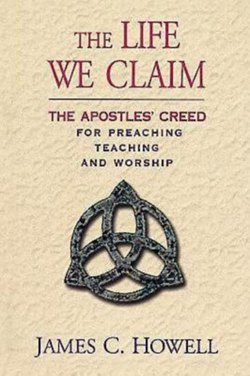Читать книгу The Life We Claim - James C. Howell - Страница 13
На сайте Литреса книга снята с продажи.
LESSON 7 . . . THE FATHER ALMIGHTY (PART 2)
ОглавлениеHis father saw him, and was filled with compassion. (Luke 15:20, AP)
Two famous paintings can help us probe deeply into the Creed's first sentence. The Hermitage in St. Petersburg houses Rembrandt's final effort (among many) to capture the return of the prodigal son on canvas. Rembrandt knew personally the acute agony of loss, having lived long enough to see three sons, two daughters, and his wife die. Henri Nouwen wrote a lovely devotional reflection (The Return of the Prodigal Son: A Story of Homecoming) on this painting, asking, "Had I really ever dared to step into the center, kneel down, and let myself be held by a forgiving God?" instead of "choosing over and over again the position of the outsider looking in." In the world, we strive feverishly for meaning, ignorant of God's firm, tender embrace. Studying the hands Rembrandt painted of the father holding his son come home, Nouwen wrote,
In them mercy becomes flesh; upon them forgiveness and healing come together. . . . I felt drawn to those hands; I have come to know those hands. They have held me from the hour of my conception, they welcomed me at birth, they held me close to my mother's breast, fed me, kept me warm. They have protected me in times of danger, they have waved me goodbye and always welcomed me back. Those hands are God's hands. . . . They are also the hands of my parents, teachers, friends, all God has given me to remind me how safely I am held.7
Nothing sexist here, as Nouwen observes how the hands are painted differently. "The father's left hand touching the son's shoulder is strong and muscular. I see a certain pressure, especially in the thumb. That hand seems not only to touch, but, with its strength, also to hold. How different is the father's right hand! This hand does not hold or grasp. It is refined, soft, and very tender. It wants to caress, to stroke, and to offer consolation and comfort. It is a mother's hand. The Father is not simply a great patriarch. He is mother as well as father. He holds, and she caresses. He confirms and she consoles." Rembrandt was near death when he painted this in 1668, and as it turns out, Nouwen himself died in 1996 while working on a documentary film about this painting.
Around the year 1300, Giotto devised a series of frescoes that narrate pictorially the life of St. Francis. In the third bay of the upper basilica of the cathedral in Assisi, we see the dramatic moment when Francis, being sued by his father Pietro Bernardone, abandoned his worldly goods, and even all ties with his father. His nakedness shielded by the cloak of the Bishop Guido, Francis lifts a hand toward heaven, where God's hand of blessing gestures toward him. It was at this moment that Francis solemnly announced, "Pietro Bernardone is no longer my father; my father from now on is 'Our Father, who art in heaven.'" For Francis, to call God "Father" was a declaration of allegiance, choosing to serve God even if it elicited his earthly father's wrath. Perhaps we may be pressed to make a similar choice, remembering what Jesus said: "If anyone comes to me and does not hate his own father . . . he cannot be my disciple" (Luke 14:26). To call God "Father" is not all warm and fuzzy, but exacts a radical obedience from us.
